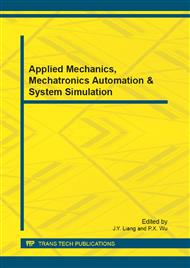p.1539
p.1545
p.1550
p.1554
p.1560
p.1569
p.1573
p.1578
p.1583
Voice Activity Detection Based on Nonlinear Processing Techniques
Abstract:
Hilbert-Huang transform is developed in recent years dealing with nonlinear, non-stationary signal analysis of the complete local time-frequency method, recurrence plot method is a recursive nonlinear dynamic behavior of time series method of reconstruction. In this paper, Hilbert-Huang Transform empirical mode decomposition (EMD) and the recurrence plot (RP) method, a new voice activity detection algorithm. Firstly, through the speech and noise based on the empirical mode decomposition and multi-scale features of the different intrinsic mode function (IMF) on a time scale filtering and nonlinear dynamic behavior of the recurrence plot method, quantitative Recursive analysis of statistical uncertainty for endpoint detection. Simulation results show that the method has a strong non-steady-state dynamic analysis capabilities, in low SNR environment more accurately than the traditional method to extract the start and end point of the speech signal, robustness.
Info:
Periodical:
Pages:
1560-1566
Citation:
Online since:
September 2012
Authors:
Price:
Сopyright:
© 2012 Trans Tech Publications Ltd. All Rights Reserved
Share:
Citation:


